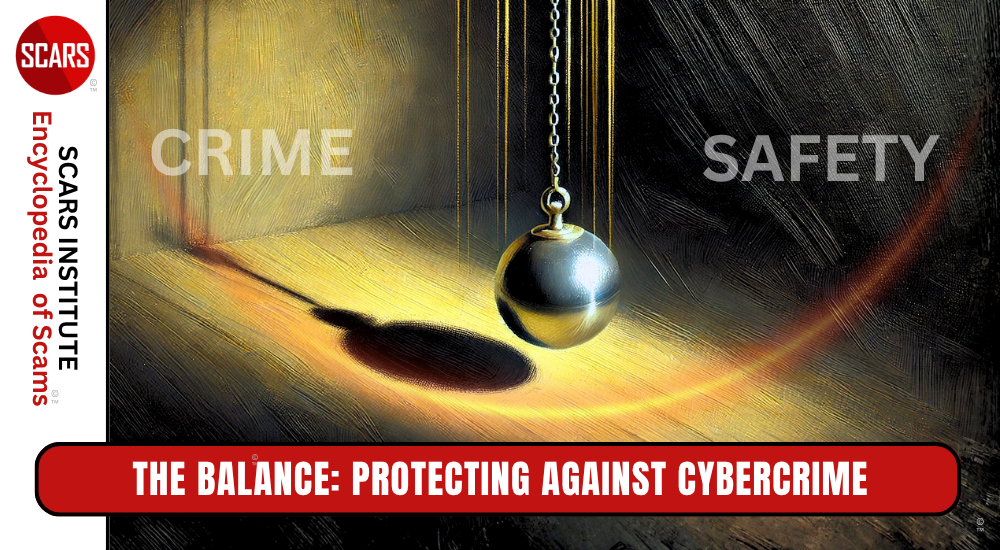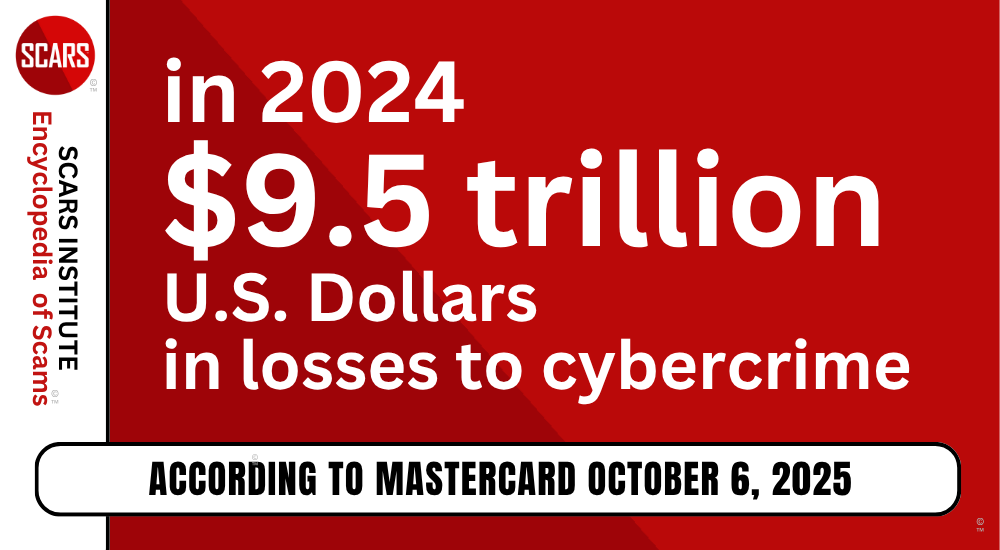Online Romance Scams And Victimhood
A Major Academic Study Into Romance Scams
A Study By: Tom Sorell and Monica Whitty, published 21 January 2019
Note: This is a serious attempt to comprehend the complete romance scam experience and is not intended to deliver simple answers. Studies such as this do help develop scam countermeasures, as well as programs to help assist victims in their recovery. English is UK English
Abstract
Online romance scams defraud dating website users of large amounts of money and inflict serious psychological harm. Victims of these scams often blame themselves for their losses and are blamed by others. We consider whether victims actually do share responsibility with the scammer for their losses. Three sorts of cases are particularly relevant: (i) where there are relatively many abortive meetings and even more fruitless money transfers in a single scam; (ii) where someone is a repeat scam victim; and (iii) where the victim has been warned by authorities that they are currently a victim of a scam and pay anyway. We argue that responsibility sometimes is shared, but that losses can be out of proportion to imprudence. Scam victims sometimes violate epistemic norms, but in ways that are peculiar to romantic attachment. The paper combines the methods of qualitative psychological research on scam victims and analytic philosophy (Research for this paper was supported by Grant EP/N028112/1 from the UK Engineering and Physical Sciences Research Council).
The online dating romance scam emerged around 2007 or 2008 and has its roots in paper-mail-based fraud (Whitty and Buchanan 2012). It is believed to be one of the most common and (for criminals) lucrative cyber-enabled scams (ACCC 2015; ONS 2016; Whitty and Buchanan 2012). Originally, men were as likely as women to be victims. Now female victims predominate. Although people targeted by the scam can come from any country, there have been notable recorded increases in numbers from the UK, Australia, Canada and the U.S. A. The FBI’s Internet Crime Complaint Center reported that that there were 14,546 US victims of romance or confidence scams in 2016, a rise of over 200 per cent from 5791 in 2014.1 Individuals’ losses can range between £50 and £240,000, although the harms have been found to be a ‘double hit’ of financial and psychological loss (Whitty and Buchanan 2016).
How does the scam work? Criminals start by creating deceptive profiles of themselves on internet dating sites, using a certain combination of text and stolen images to arouse interest. For example, profiles of retired military men living abroad are often employed to attract middle-aged women daters. The profiles lure people into making a romantic connection with a persona constructed by a scammer, whose goal is to obtain as much money as they can from online daters.
Scammers groom the people who take their bait. Whitty (2013) describes the typical stages of grooming. At first, the scammers’ goal is to make the target fall in love with the persona they have constructed. This is usually accomplished by directing numerous ardent text messages daily to the target, sometimes interspersed with romantic gifts. If that is successful, a second stage of interaction begins in which the scamming target is led to believe they are about to meet the person they have fallen in love with. Soon the scammer communicates news of various obstacles to meeting, each of which can supposedly be overcome by transfers of money.2 If the victim produces these transfers, a meeting becomes imminent again. At the last moment, however, it, too, falls though, often in circumstances that require the victim to come to the rescue of the scammer’s persona by means of yet more financial transfers. The scenario of the imminent and then aborted meeting can be played out many times before the victim acknowledges or is made aware (e.g. via law enforcement or money-transfer agencies) that they are being defrauded.
Victims often blame themselves for not recognising the fraud, especially when others have brought suspicions to their attention. They are also blamed by family for squandering assets that might have formed part of an inheritance. The question to be pursued in this paper is whether scamming targets ever do share responsibility with the scammer for their losses, both financial and emotional. The question is partly philosophical, relying on the nature of agency, and partly psychological, relying on the behaviour, emotions and beliefs characteristically provoked by the scamming process.
The paper is organised as follows. After distinguishing the point of our research question from victim-blaming, we shall consider the practices of dating websites and the psychological characteristics of online daters. It turns out that online daters who are most vulnerable to scamming typically display ‘hyperpersonal’ online behaviour (“Obstacles and aids to avoiding scams” section). We go on to consider a range of cases drawn from real life that we think illustrate different degrees of shared responsibility for the harms of scamming (“Warnings of scams and kinds of online daters” section). Scamming targets who miss the warning signs often violate norms for forming beliefs and being responsive to evidence, and for giving appropriate weight to their future interests. At first sight, then, these people bear some responsibility for how things turn out (“Drawing from qualitative research: methodology” section). In romance scams, however, the norms of expressing love relax epistemic norms. The scamming victim often acts as a lover morally should, but their love is epistemically defective because it is based on so many false beliefs. In other words, the scamming victim violates norms for forming beliefs that make love well informed, and is criticisable for the violation (“Scam victimhood and epistemic ethics” section). Once on the hook, however, even knowingly on the hook, victims may be incapable of weighing evidence in such a way as to save themselves from further victimisation. The last section draws conclusions and indicates directions for future interdisciplinary research.
What Is A Scam Victim?
The boundaries of victimhood are disputed in both everyday life in liberal democracies, and in the social sciences. According to findings associated with just world theory (cf e.g. Pinciotti and Orcutt 2017), there is widespread attachment to a belief in a world in which, overall, people get what they deserve. Victimisation challenges this belief. In response, there is a tendency to find desert underneath the surface of victimisation, or beneath the surface of systematic disadvantage. Ryan’s ground-breaking Blaming the Victim identified this tendency in attempts in American public policy in the 1960s to connect the poorer life prospects of African Americans compared to those of whites with a pattern of upbringing in which single mothers receiving welfare payments ran households in the absence of biological fathers. Here, a supposedly criticisable style of parenting and welfare dependence was implied to underlie and justify economic inequality. Again, there are widely documented, official tendencies to treat women’s reports of rape sceptically where a victim has had an active sex life, or where the context of the crime includes heavy, voluntary consumption of alcohol by the victim. Here, the idea might be that the drunk victim is complicit in what happens to her because she is active in disabling her judgement or her inhibitions, or her ability to put up a fight, or all three. There is a huge literature on victim-blaming (see e.g. van der Bruggen and Grubb 2014), and the sub-discipline of victimology in sociology and legal studies is sometimes motivated by a wish to stamp it out, preventing revictimisation through official or media scepticism.
Sociological discussions of the “ideal victim” tend to reinforce disapproval of victim-blaming. These discussions stem from a famous paper by Nils Christie (Christie 1986). Christie suggests that the ideal victim is a relatively defenceless person (typically old and female) engaged in blameless activity who suffers an unprovoked attack by some stronger person. “Ideal victim” in this case means something like “most convincing stereotype of a victim”. In this sense, to use another of Christie’s examples, a young man who suffers an unprovoked attack is not an ideal victim, regardless of whether he suffers a greater injury than the old lady. He is not an ideal victim because stereotypes of young men suggest that they ought to be able to defend themselves and so prevent their becoming victims. Relatedly, women who do not put up a struggle against a sexual assailant are not ideal victims. Neither are roaring drunk women who have been flirting in a bar prior to assault or rape. Christie suggests that stereotypes can change, so that less than ideal victims at one time (women who suffer domestic violence) can get closer to the ideal later, for example, because of the wider acceptance of feminist views of power relations within the home or family.
When it comes to repeat payments within a single scam or repeated losses of money in a series of romance scams, even to ask whether the victims share responsibility for their losses may appear to be an instance of victim-blaming. But we deny that it should be interpreted this way. For one thing, the question can correctly be answered negatively in many cases, especially where online scamming is being encountered by an agent for the first time. But second, even where there is responsibility, it can come in degrees, depending on the cognitive and affective influence of a romance scammer’s communications. Here is where methods borrowed from philosophy come into their own. In analytic philosophy of mind, the concept of repeat victimhood is problematic because (i) agency involves rationality; (ii) scam victims seem to have agency to some degree and yet (iii) they violate—sometimes more than once—elementary norms of (prudential) rationality, that is, norms for protecting one’s own interests over time. The saying, ‘Once bitten, twice shy’ may state in a crude way a psychological generalisation—to the effect that a person who has been bitten once will be cautious the next time—but it also has normative force: once bitten, one should be cautious the next time, lest one be bitten again. At least on the surface, repeat victims of the same scam seem to ignore that normative force. They may not ignore it in all departments of life outside internet dating or online romance, but they ignore it in ways that sometimes baffle themselves, their families, victim support workers and the police.
First-time scamming victims are in a different case. They fall prey—perhaps understandably—to persuasive pitches that scammers have refined over many years. Scammers take care to make themselves sound plausible, and they use effective props, like well-designed websites and telephone answering services. The time they spend keeping up appearances means that scammers assume that their targets will exercise elementary precautions and look for superficially corroborating evidence of their genuineness. They do not necessarily expect their targets to swallow anything they are told just like that. But often the checks carried out by targets are, as the scammers hope, superficial. Perhaps first-time victims of internet scams are inexperienced online or inexperienced with dating sites or investment propositions. When they lose money, that is often to be expected. But for some scam victims, the harm the first time is all the harm there is. They take avoiding action and do not get victimised a second time.
Second-time victimisation with a different scam is perhaps also unsurprising. But we are still left with the challenge of understanding people who not only realise that they have been scammed in the past, but who, in the present, ignore correct, credible and authoritative information that they are being scammed again, in more or less the same way as they were scammed before. These people are certainly victims,3 since they suffer significant harm, but until the possible causes of their disregarding evidence are discussed, it is unclear whether or not anything they unequivocally “do” or “intend” contributes to the harm. We cannot simply decree that no victim—no-one who has suffered unprovoked injury from another– has anything at all to do with the harm they suffer. Here is where the apparatus used in philosophy and law to conceptualise excuses and justifications for action are relevant. And it is an elementary version of that apparatus that we will use here.
Obstacles And Aids To Avoiding Scams
The behaviour of scamming targets is sometimes apparently compulsive, sometimes the result of a disabling kind of grooming, sometimes influenced by carefully manufactured sources of embarrassment and pressurised decision-making (Button et al. 2014). Philosophical theories of responsibility4 have identified factors that reduce or take away responsibility for actions that otherwise seem to be intentional [See e.g. (Austin 1979)]. Factors that reduce or take away responsibility include various kinds of excusable ignorance or mistake, the operation of psychological compulsion, other people’s coercion, or interference by other agents or events in the performance of the action. Where none of these excusing factors exists for refusing to take avoiding action, agents might be said to be partly responsible (with the scammer) for financial losses and other harms. Where they do exist, the part-responsibility is less.
Are excusing factors present in the behaviour of scam victims? Perhaps. One explanation for someone’s failing to take avoiding action against a certain avoidable harm is that the harm is hard to recognise. This means that it probably won’t be recognised, even if the agent would have resources for avoiding it if it were recognised. Certain kinds of loss of autonomy are a case in point. In the UK radio soap opera, The Archers, a recent storyline that attracted many listeners involved a female character who over more than a year gradually falls under the hyper-controlling influence and violence of her husband. The character, Helen, fails to identify some of the relevant instances of control for what they are, and is eventually so much in her husband’s psychological grip that she feels unable to tell anyone when she suffers marital rape and then systematic isolation as her husband alienates her friends and even the affections of her young son. The reason the storyline worked so well is that it unfolded very gradually in a soap that is aired daily. The slow-burn of the revelation that the woman was married to a manipulative psychopath occurred simultaneously in the soap character and in the audience.
There are counterparts of this in the romance scam. Being groomed for money through romantic patter is easily mistaken for being the object of genuine romantic interest simply, which is usually highly gratifying and energising—apparently the opposite of harmful. Requests for money, while recognisably out of the ordinary in the normal process of being wooed, might seem to be appropriate from loved ones caught up in emergencies in far off places, the sort in which the profiles of scammers often place their personas. In other words, it might be thought that the ways in which scammers disguise their goals by appearing to follow the norms of online dating, and by keeping up tried and tested cover stories, makes it less than straightforward to avoid romance scams. Seeing through the scam may further be complicated by the fact that certain romantic beliefs are a predictor (albeit a weak predictor) of getting scammed (Buchanan and Whitty 2014). For example, many scam victims maintain a romantic belief in the perfection of the romantic relationship they deludedly think they are in.
Let us call the phenomena we are reviewing obstacles to avoidance. Does not the presence of these obstacles in the background of romance-scamming transactions exculpate victims of scamming who have repeatedly co-operated with scammers? In other words, might not an agent be absolved of responsibility for harm inflicted on her if there are obstacles that mean she could not have taken avoiding action? The reason we balk at this suggestion is that it makes the mere presence of obstacles to avoidance sufficient for taking away responsibility. Before we agree to this, we need to ask how big the obstacles are, and whether there are not—also in the background of the romance-scamming situation—some aids to avoidance of the obstacles, such as previous experiences of victimisation. If aids to avoidance are available, the possibility of shared responsibility for harmful outcomes is once again opened up.
Clearly, the answer to the question of responsibility will depend on the online circumstances of, and other facts about, the agents, but it will also depend on what we might call unspoken but widely understood “rules of the game” of online dating. For example, if people entering online dating commonly approach it sceptically, that is, knowing that people they meet online often do not match their profiles or their pictures, and knowing that people with profiles often lie about their goals in dating, then people who use dating sites are aided in avoiding unwanted dates and partners. If, in addition, users of online dating sites are alerted explicitly to a particular class of unwanted dates and partners—namely romance scammers, and the warning signs of scamming behaviour—they have resources for avoiding unwanted approaches and for overcoming obstacles to avoidance. All the more so, if they recount their online experiences to sceptical friends who bring up the possibility of scamming. The more these aids to avoidance are available but not taken up and applied, the more responsible the scamming victim.
Warnings Of Scams And Kinds Of Online Daters
The question of shared responsibility and shaky victim status is particularly relevant in three sorts of cases: (i) where there are relatively many abortive meetings and even more fruitless money transfers in a single scam; (ii) where someone is a repeat scam victim and (iii) where the victim has personally been warned by authorities in a type-(i) or type-(ii) case that they are currently a victim of a scam and yet decide to continue an online relationship and lose money. In these cases, victim status can look weak because of the length of the apparently willing co-operation with the scammer, the variety of co-operative acts, and the fact that impersonal, benevolent and informed advice is ignored.5 We shall concentrate on type-(i)-(ii) and-(iii) cases where money transfers do not seem to victims or observers to be compelled, but, on the contrary, seem to them to be made more or less willingly and promptly. Here, intuitively, there is enough agency for the scam target to share responsibility with the scammer for his or her losses.
Even in these cases, however, there can be genuine victimisation—because people can be ruined—i.e. can have their lives irreversibly and severely damaged—by the resulting poverty, shame or inability to form further relationships. Sometimes the ruin includes long-lasting emotional attachment to the now lost scam persona, which people grieve for. Some users of online dating sites have very little money in the first place and are tipped over into destitution by being scammed. These initially vulnerable people, whose relatively poor standard of life is made worse by the scam, are clearly victims—even if they are in some sense willing suppliers of funds to the scammer on certain occasions. And victim status can arguably also extend to those who readily withstand financial losses but feel deeply betrayed all the same.
The semi-compulsive behaviour of some people who experience online romantic attachment, and the damage it can produce, make it morally urgent to protect scamming targets from repeat victimhood, but the agency of romance scam victims seems to require—morally require—that preventive measures be channelled through advice. Pre-emptive measures, such as blocking the victim’s telephone or email accounts, or unilateral blocking of payments by banks, can seem morally wrong because they appear to deny the agency of the victim. We suggest later that in practice agency and compulsion can be reconciled—by making pre-emption conditional on, and subsequent to, failed but conscientious advice-giving as well as the victim’s reaching a threshold of unaffordable financial loss.
Before considering in greater depth the psychology of online romance scam victims, let us review the characteristics of online daters as revealed by existing psychological literature. Dothey regard potential dates and partners sceptically? And are warnings of the possibility of scamming explicitly given to users of those sites? After reviewing some of the results from the literature on the characteristics of online daters, we shall ask whether they typically enter the process sceptically or forewarned about scamming.
We approached the question of whether online daters are explicitly warned of the possibility of scamming by conducting an internet search in the UK using the search term “best internet dating sites”. Inspection of the dozen such sites identified in early 2017 revealed a variety of practice. With a few exceptions, online dating sites did not call attention to the dangers of being asked for money, and such information as was provided tended to be reachable only through links in the small print of the site home page. Precautions for an offline date were at least as prominent or more prominent than the scamming hazards. The exception discovered by the review was eharmony.com, which had extremely extensive information. Match.com gave less, but still a considerable amount of, information.6
If this quick, informal survey is any guide to dating sites in general, we probably have to conclude that online daters are not routinely or explicitly forewarned adequately of the dangers of fraud. But even if this is so, is not the typical process of meeting people whose profiles have been chosen an exercise in testing advertised characteristics against reality? If so, are not online daters very well aware that profiles are unreliable and in need of testing, so that the high probability of at least mild deception (Fiore 2008) is often assumed?
A Pew report on internet dating and relationships (2013) says that
half (54%) of online daters have felt that someone else seriously misrepresented themselves in their profile. And more seriously, 28% of online daters have been contacted by someone through an online dating site or app in a way that made them feel harassed or uncomfortable. Women are much more likely than men to have experienced uncomfortable contact via online dating sites or apps: some 42% of female online daters have experienced this type of contact at one point or another, compared with 17% of men (Smith and Duggan, 2013).
The existing literature suggests that users of online dating sites tend to be shier and older compared with those who form relationships via other means (Scharlott and Christ 1995). Users of these sites tend to be far less trusting and much more sceptical about their potential dates (Whitty 2008). Users often treat potential dates as commodities or products that ought to live up to their advertising. Daters often note that users misrepresent themselves (e.g. age, height, weight, socio economic status) (see Toma et al. 2008; Whitty 2008) in order to increase their harvest of potential dates. Knowing that profiles misrepresent daters and wishing to establish whether sexual chemistry exists with those whose profiles attract them, many users of online dating sites tend to proceed fairly quickly from initial contact on the site to meeting face-to-face (Whitty 2008; Lawson and Leck 2006). Among other things, these agents want to know whether potential romantic partners live up their profile descriptions, and also whether attraction survives meeting the potential partner. Let us call these agents “meet-to-test” online daters.
Meet-to-test online daters can be contrasted with those who form an online relationship via chat rooms and newsgroups. These people tend to be socially anxious and lonely, and feel that they are better able to express what they think of as their ‘true self’ when communicating online rather than face-to-face (McKenna et al. 2002). The ‘true self’ seems to be one that the shy and lonely believe would be missed by others meeting them offline. Stritzke et al. (2004) found, in a survey of 134 university students, that shy individuals reported substantially lower levels of rejection sensitivity, and higher levels of interpersonal competence, when initiating relationships in cyberspace compared to offline.Not only does the online environment offer the shy and lonely a chance to exhibit themselves as they think they really are and would be discovered to be in ideal circumstances: it also affords greater intimacy. Walther et al. (2001) argue that ‘hyperpersonal’ relationships—relationships that can be experienced as more intimate, more open and more trusting compared with the norm—are formed online: “…users sometimes experience intimacy, affection, and interpersonal assessments of their partners that exceed those occurring in parallel F[ace]T[o]F[ace]activities or alternative C[omputer]M[ediated] C[ontexts]” (Walther et al. 2001, p. 109).
Walther (1996) argues that people use the technical capacities of the Internet to assist in creating an impression. Senders of messages and creators of profiles exploit the technology to present aspects of themselves that the other would deem socially desirable. Sometimes they embellish their profiles. Again, the same people who manage their own images idealise those who send them messages. The messages are believed to demonstrate the similarity of their online partner to themselves as well as their highly desirable character. The internet allows one to be strategic in the presentation of the self and creates a space where the outside world is filtered out, and cognitive resources can instead be directed in a concentrated way onto online communications.
Of the two different approaches to online relationships—on the one hand, proceeding quickly to a face-to-face meeting, and, on the one hand, hyperpersonal internet-immersed behaviour– it appears that the latter is associated more often with being caught in scams. That is, those who succumb to online scammers tend to be susceptible to hyperpersonal relationships initiated by scammers (Whitty 2013). The reasons for this might include lack of experience of using dating sites (with some receiving few responses to their profiles), or unhappy experiences with face-to-face meetings. Scamming targets who have previously made the move from online preliminaries to a physical meeting have typically felt negatively judged by their face-to-face dates, which might explain their acceptance of fraudulent online dates who appear to accept them without judgement.
Romance Scams Research Report Document
Online Romance Scams And Victimhood – Sorell-Whitty 2019
Hover Over The PDF To View Controls – Use Up/Down Arrows To View Pages
[pdf-embedder url=”https://romancescamsnow.com/wp-content/uploads/2019/01/Sorell-Whitty2019_Article_OnlineRomanceScamsAndVictimhoo.pdf”]
Sorell, T. & Whitty, M. Secur J (2019). https://doi.org/10.1057/s41284-019-00166-w

SCARS™ Team
A SCARS Division
Miami Florida U.S.A.
TAGS: Online Dating, Hyperpersonal, Internet Use ,Online Fraud, Romance Scams, Moral Responsibility, Epistemic Ethics, Tom Sorell, Monica Whitty, Scam Victims, Victimhood, Responsibility,
END
– – –
Tell us about your experiences with Romance Scammers in our Scams Discussion Forum on Facebook »
– – –
FAQ: How Do You Properly Report Scammers?
It is essential that law enforcement knows about scams & scammers, even though there is nothing (in most cases) that they can do.
Always report scams involving money lost or where you received money to:
- Local Police – ask them to take an “informational” police report – say you need it for your insurance
- Your National Police or FBI (www.IC3.gov »)
- The SCARS|CDN™ Cybercriminal Data Network – Worldwide Reporting Network HERE » or on www.Anyscam.com »
This helps your government understand the problem, and allows law enforcement to add scammers on watch lists worldwide.
– – –
Visit our NEW Main SCARS Facebook page for much more information about scams and online crime: www.facebook.com/SCARS.News.And.Information »
To learn more about SCARS visit www.AgainstScams.org
Please be sure to report all scammers HERE » or on www.Anyscam.com »
All original content is Copyright © 1991 – 2020 SCARS All Rights Reserved Worldwide & Webwide – RSN/Romance Scams Now & SCARS/Society of Citizens Against Relationship Scams are all trademarks of Society of Citizens Against Relationship Scams Incorporated (formerly the Society of Citizens Against Romance Scams)
Legal Notices:
All original content is Copyright © 1991 – 2020 SCARS All Rights Reserved Worldwide & Webwide. Third-party copyrights acknowledge.
SCARS, RSN, Romance Scams Now, SCARS|WORLDWIDE, SCARS|GLOBAL, SCARS, Society of Citizens Against Relationship Scams, Society of Citizens Against Romance Scams, SCARS|ANYSCAM, Project Anyscam, Anyscam, SCARS|GOFCH, GOFCH, SCARS|CHINA, SCARS|CDN, SCARS|UK, SCARS Cybercriminal Data Network, Cobalt Alert, Scam Victims Support Group, are all trademarks of Society of Citizens Against Relationship Scams Incorporated.
Contact the law firm for the Society of Citizens Against Relationship Scams Incorporated by email at legal@AgainstScams.org
-/ 30 /-
What do you think about this?
Please share your thoughts in a comment below!
Article Rating
Table of Contents
- Romance Scams Research
- A Major Academic Study Into Romance Scams
- Abstract
- What Is A Scam Victim?
- Obstacles And Aids To Avoiding Scams
- Warnings Of Scams And Kinds Of Online Daters
- Romance Scams Research Report Document
- Tell us about your experiences with Romance Scammers in our Scams Discussion Forum on Facebook »
- Please be sure to report all scammers HERE » or on www.Anyscam.com »
RATE THIS ARTICLE?
LEAVE A COMMENT?
Recent Comments
On Other Articles
- Nikolaus on Dating Scammers Paradise: Ivory Coast: “The Ivory Coast romance scam is still going on. It seems that local authorities don’t handle the issue effectively!” Dec 10, 02:17
- on The SCARS Institute Top 50 Celebrity Impersonation Scams – 2025: “Thank you – we will.” Dec 7, 11:41
- on The SCARS Institute Top 50 Celebrity Impersonation Scams – 2025: “You should add Sean Bean to your list of Celebrities. This one is very good, and persistent. He will be…” Dec 2, 12:07
- on How You Think & Talk About Your Scam Affects Your Recovery: “I have hung on to the scams for far too long. With the intervention of an all-merciful God, I have…” Nov 6, 22:13
- on Disengaging From A Fake Scam Relationship: “Taci, you may want to join our new support community at www.SCARScommunity.org” Nov 6, 03:01
- on Disengaging From A Fake Scam Relationship: “This particular article helped me discover the many things I did wrong the first time I was scammed. I should…” Nov 5, 22:49
- on About the SCARS RomanceScamsNOW.com Website – 24 Years Published: “It was unavailable for a few days, but it is available again. If he would be interested, he is welcome…” Nov 5, 00:59
- on About the SCARS RomanceScamsNOW.com Website – 24 Years Published: “My husband has been scammed and your classes have been helping him but now he can’t seem to access them.…” Oct 26, 14:57
- on Talia Shepard – Impersonation Victim – Stolen Photos – 2024: “Hi, I’m Patrick from Belgium and I found this site by chance, so I just got to know it, and…” Oct 17, 23:46
- on Talia Shepard – Impersonation Victim – Stolen Photos – 2024: “Hallo ik ben Patrick uit Belgie en het is in verband over PayPal. Ik heb het dit jaar spijtig genoeg…” Oct 17, 23:08
ARTICLE META
Important Information for New Scam Victims
- Please visit www.ScamVictimsSupport.org – a SCARS Website for New Scam Victims & Sextortion Victims
- Enroll in FREE SCARS Scam Survivor’s School now at www.SCARSeducation.org
- Please visit www.ScamPsychology.org – to more fully understand the psychological concepts involved in scams and scam victim recovery
If you are looking for local trauma counselors please visit counseling.AgainstScams.org or join SCARS for our counseling/therapy benefit: membership.AgainstScams.org
If you need to speak with someone now, you can dial 988 or find phone numbers for crisis hotlines all around the world here: www.opencounseling.com/suicide-hotlines
A Note About Labeling!
We often use the term ‘scam victim’ in our articles, but this is a convenience to help those searching for information in search engines like Google. It is just a convenience and has no deeper meaning. If you have come through such an experience, YOU are a Survivor! It was not your fault. You are not alone! Axios!
A Question of Trust
At the SCARS Institute, we invite you to do your own research on the topics we speak about and publish, Our team investigates the subject being discussed, especially when it comes to understanding the scam victims-survivors experience. You can do Google searches but in many cases, you will have to wade through scientific papers and studies. However, remember that biases and perspectives matter and influence the outcome. Regardless, we encourage you to explore these topics as thoroughly as you can for your own awareness.
Statement About Victim Blaming
Some of our articles discuss various aspects of victims. This is both about better understanding victims (the science of victimology) and their behaviors and psychology. This helps us to educate victims/survivors about why these crimes happened and to not blame themselves, better develop recovery programs, and to help victims avoid scams in the future. At times this may sound like blaming the victim, but it does not blame scam victims, we are simply explaining the hows and whys of the experience victims have.
These articles, about the Psychology of Scams or Victim Psychology – meaning that all humans have psychological or cognitive characteristics in common that can either be exploited or work against us – help us all to understand the unique challenges victims face before, during, and after scams, fraud, or cybercrimes. These sometimes talk about some of the vulnerabilities the scammers exploit. Victims rarely have control of them or are even aware of them, until something like a scam happens and then they can learn how their mind works and how to overcome these mechanisms.
Articles like these help victims and others understand these processes and how to help prevent them from being exploited again or to help them recover more easily by understanding their post-scam behaviors. Learn more about the Psychology of Scams at www.ScamPsychology.org
Psychology Disclaimer:
All articles about psychology and the human brain on this website are for information & education only
The information provided in this article is intended for educational and self-help purposes only and should not be construed as a substitute for professional therapy or counseling.
While any self-help techniques outlined herein may be beneficial for scam victims seeking to recover from their experience and move towards recovery, it is important to consult with a qualified mental health professional before initiating any course of action. Each individual’s experience and needs are unique, and what works for one person may not be suitable for another.
Additionally, any approach may not be appropriate for individuals with certain pre-existing mental health conditions or trauma histories. It is advisable to seek guidance from a licensed therapist or counselor who can provide personalized support, guidance, and treatment tailored to your specific needs.
If you are experiencing significant distress or emotional difficulties related to a scam or other traumatic event, please consult your doctor or mental health provider for appropriate care and support.
Also read our SCARS Institute Statement about Professional Care for Scam Victims – click here to go to our ScamsNOW.com website.




















Thank you for your comment. You may receive an email to follow up. We never share your data with marketers.